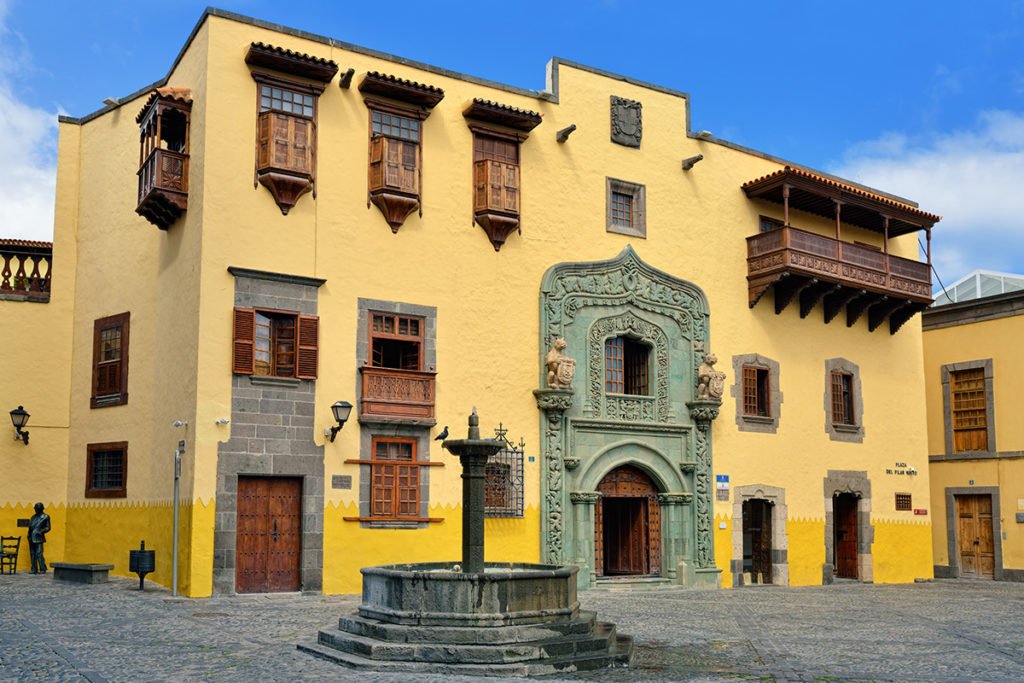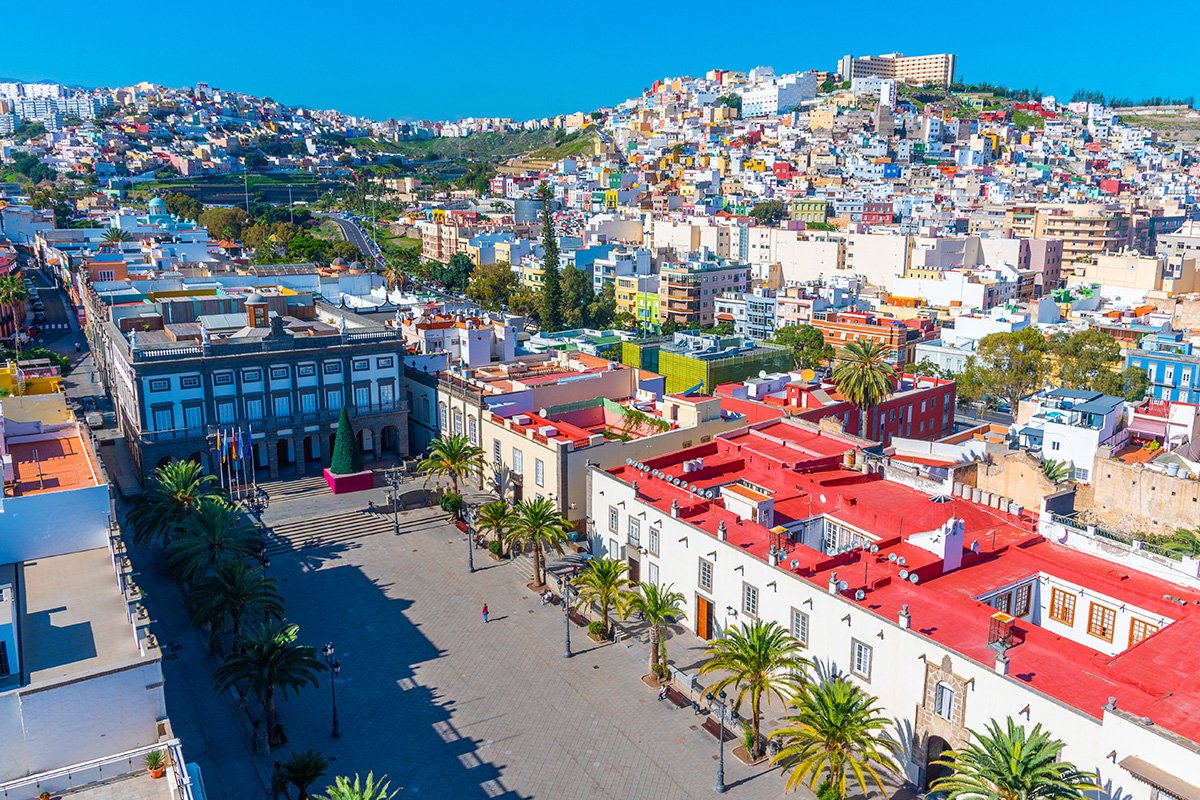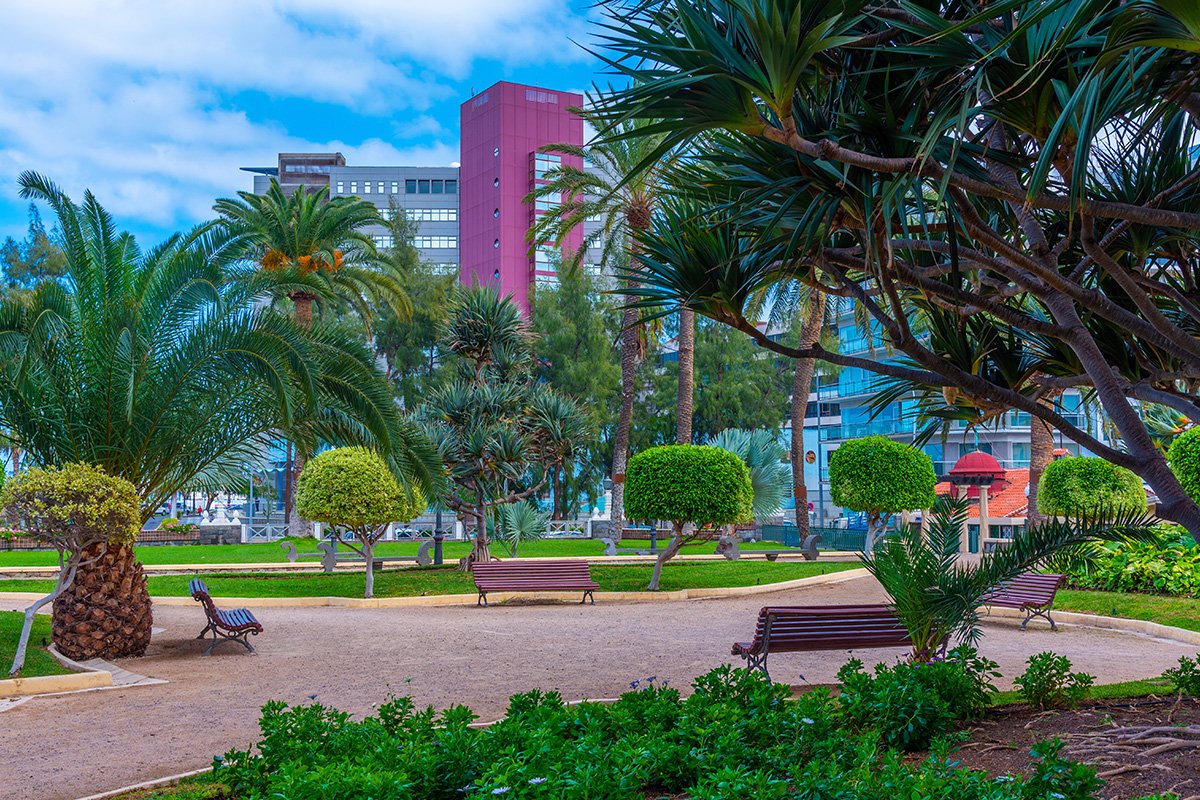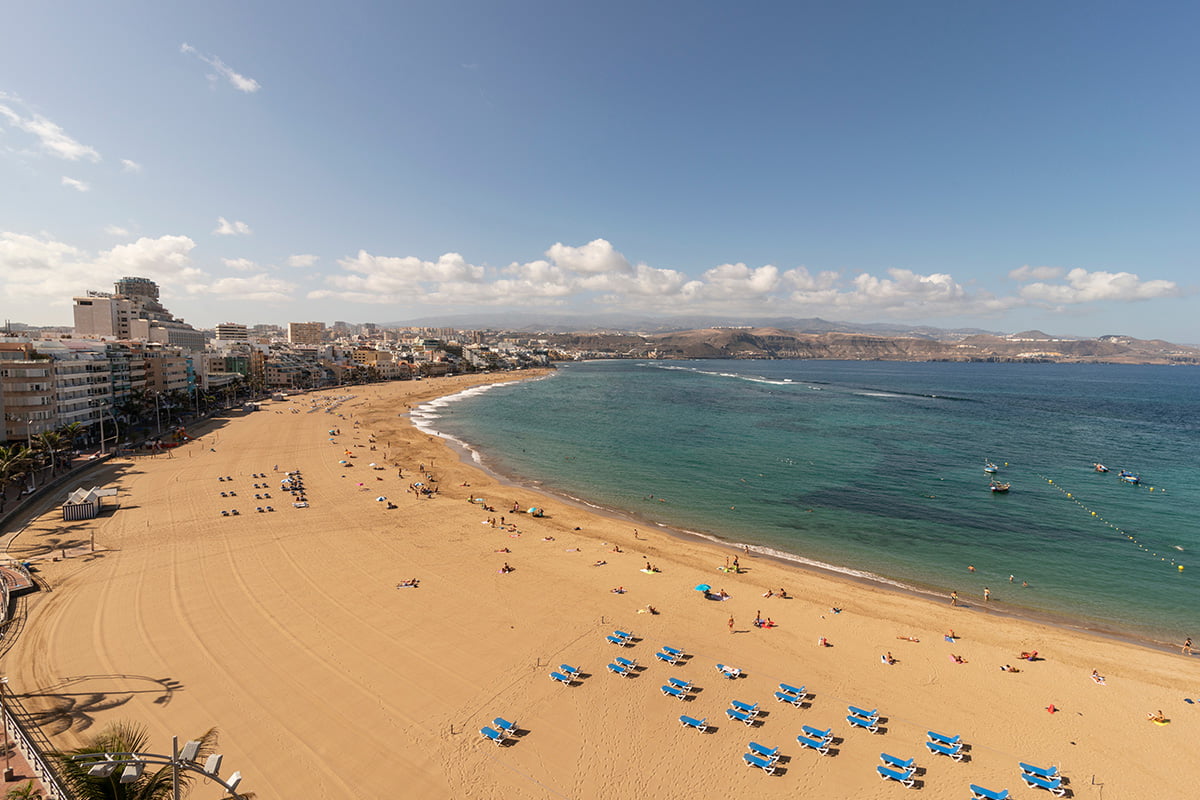A few hundred years ago, it was from this city that Christopher Columbus set off on his voyage to America. Today, Las Palmas is one of the most popular tourist destinations in all of Europe. And no wonder, because this city really has a lot to offer.
Las Palmas de Gran Canaria is the largest city of the popular Spanish archipelago, as well as the capital of the island of Gran Canaria and the capital of the Canary Islands (the second capital is Santa Cruz de Tenerife). The city is located in the northeast of the island, and its mild climate is considered by many to be the best in the world. It is appreciated by millions of tourists who fly to Gran Canaria Airport every year, which is currently the fifth largest airport in Spain.
What is it that attracts them all to this city? The excellent climate for relaxation is not the only thing that makes Las Palmas win the hearts of holidaymakers.
History of the city
To learn about the past of the fascinating capital of Gran Canaria, we have to go back to 1478, specifically to June 24 (St. John’s Day). It was then that the Spaniards sailed to the island in the Atlantic Ocean, which had been inhabited by the Guanches until then, and it was then that the fate of the entire island was to change dramatically. The location of the first base was not accidental.
The sparsely populated point away from large concentrations of indigenous people was an ideal place to begin the conquest of the island. Shortly thereafter, the current capital of Gran Canaria became the first overseas urban center in Europe, making it an example for the creation of hundreds of cities in America – from Patagonia to the United States.
After 5 years of quite bloody battles, the island became the official territory of Spain, and the importance of the city continued to grow. It began to constitute the political center of the Canary Islands, and thanks to the intensive trade in sugar cane – also the economic center of the archipelago. In 1927, the province of Las Palmas was created, which includes not only Gran Canaria, but also Fuerteventura, Lanzarote and La Graciosa. Since the 1970s, the popularity of Las Palmas as a tourist center has been constantly growing. No wonder, because the list of attractions of this city is really long.
Historical places you must see
Columbus House (Museo Casa de Colón)
This is the former residence of the governor who hosted Christopher Columbus before his first voyage to America. Thirteen rooms are available for visiting, which step by step reveal further facts from the traveler’s life.
You will find old maps, a copy of the logbook kept by Columbus and a reconstruction of the interior of his ship. There is also no shortage of exhibits from the New World, such as Aztec ceramics, religious utensils used for rituals or objects from the everyday life of the original inhabitants of South America.
Cathedral of St. Anne (Catedral de Santa Ana)
This cathedral is an example of architecture in which it is difficult to find one leading style. Elements of Gothic, Renaissance, Baroque and Neoclassicism mix with each other at every step. Perhaps that is why it is considered the most interesting religious monument in the city.
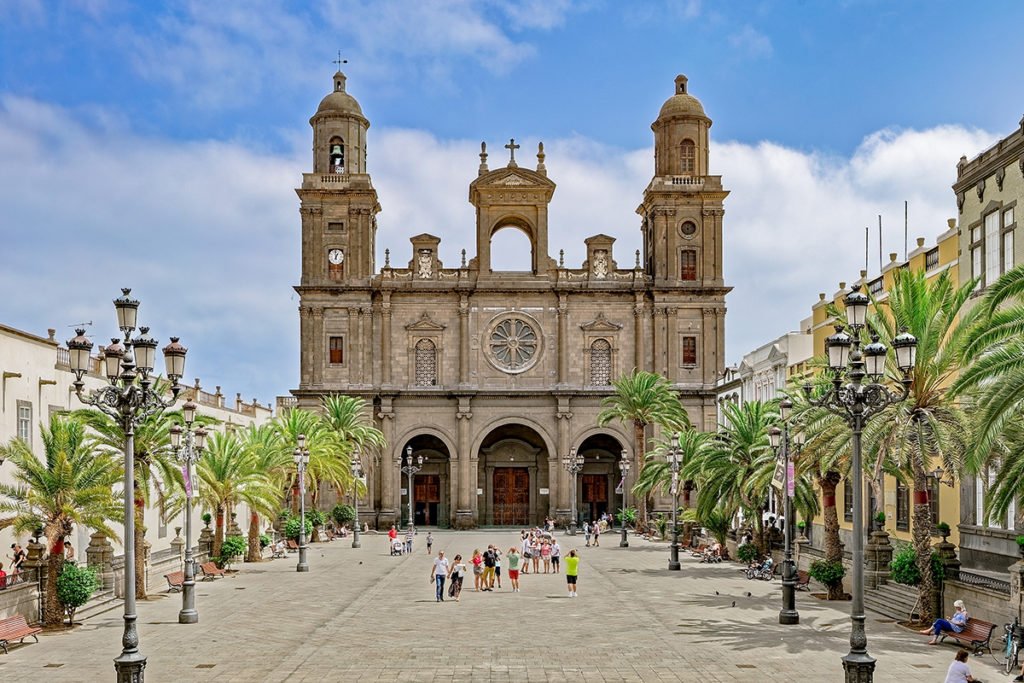
Even if you are not a fan of this type of art, the Cathedral of St. Anne must be on your route, because for a small fee you can go to the top of the tower, from which there is a charming panorama of Las Palmas de Gran Canaria. After visiting the cathedral, it is also worth visiting the Museum of Sacred Art, which is separated from the cathedral building by only a tiny courtyard.
Plaza de Santa Ana
Just in front of the cathedral is the 16th-century Plaza de Santa Ana. It is pretty because it is surrounded by historic tenement houses. But it is also special because it is decorated with bronze statues of eight dogs. Locals call them Los Perros de Santa Ana (trans. Dogs of Saint Anne), and tourists are extremely willing to take pictures with them – after all, can you be surprised? All the dogs, even those not wagging their tails happily, have the power to win hearts!
One theory says that the dogs are a symbolic representation of the eight Guanche rulers… Another that it was simply a loose idea of a former mayor who wanted to add more charm to this place in this way.
Vegueta district
If you want to feel the atmosphere of old times floating in the air, be sure to go to the historic district of Vegueta. There is no better place in the capital to discover the history of the Canary archipelago. It is the oldest and most characteristic part of the old town, where you will be delighted by narrow, cobbled streets leading between traditional houses. In this district you can also find the most important places of local culture.
Triana district
Just cross one busy street to get from the Vegueta district to Triana. It is a typical shopping district, on the streets of which you can buy practically everything you want. The quiet streets of this part of the city are closed to traffic, which is definitely conducive to walking.
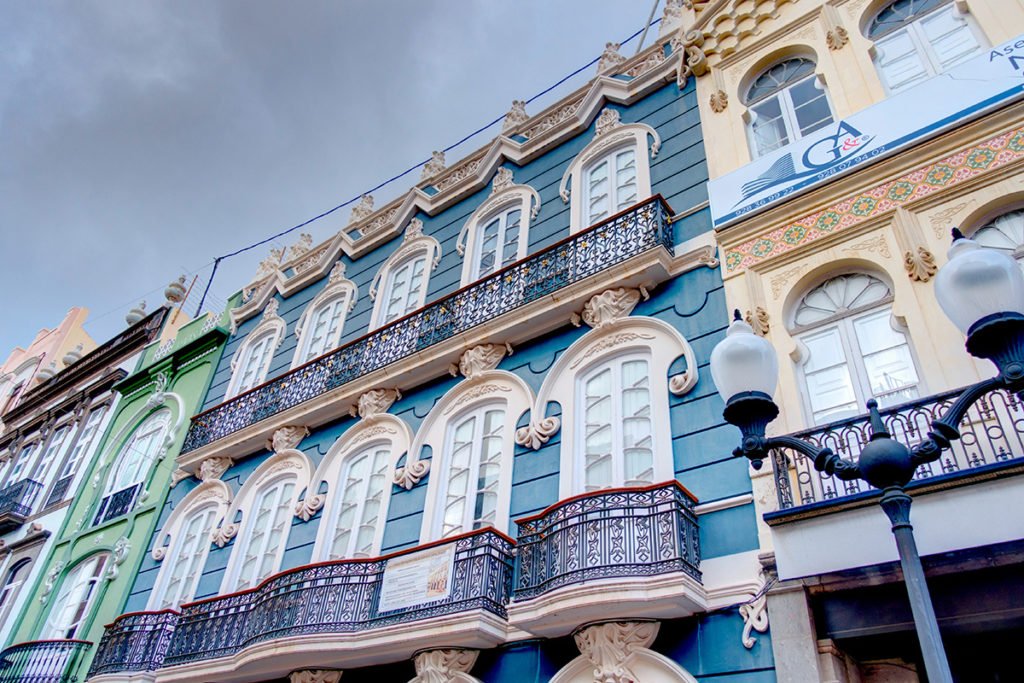
Both locals and tourists throng the numerous restaurants and cafe gardens, and in the shop windows you will find everything from holiday souvenirs to the latest collection released by one of the leading brands. The main shopping street here is Calle Mayor de Triana, and it is along this pedestrian boulevard that you should go if you are planning major purchases.
Ciudad Jardín district
And here is a real green oasis of peace. This part of the city developed thanks to the British, who economically dominated Las Palmas de Gran Canaria at the end of the 19th century. Residences and charming gardens tower here, but the greatest pride of Ciudad Jardín is Parque Doramas – a beautiful park in the city center full of fountains, sculptures, flowers and trees. There you can see a monument commemorating the end of the battle of the Guanches with the Spanish conquistadors, or visit a museum dedicated to Néstor de la Torre, one of the most famous Spanish painters. The most surprising part of the park, however, is Pueblo Canario – an architectural complex that is a reconstruction of a traditional Canarian village.
La Isleta
If it wasn’t for the small strip of land between the beaches of Las Canteras and Las Alcaravaneras, this district could be a separate island. But the peninsula is also worth seeing. Why? There are several reasons. The first is Castillo de la Luz (Castle of Light) built at the end of the 15th century, which now houses an exhibition center. The second reason is Cuevas de Los Canarios – an archaeological site presenting the former caves of the Guanches. The last excuse to visit this place is the beautiful views that spread from the local hills.
The most interesting museums and cultural attractions in Las Palmas
Canary Museum (Museo Canario)
Located in the Vegueta district, the Canary Museum is one of the oldest museums on the island. It was founded in 1879 and, as you can expect from the name, presents the history and culture of the island. Thanks to the exhibits from archaeological excavations, it is easy to see what the everyday life of the former inhabitants of the island looked like and what their duties, ceremonies or rituals were. There is also no shortage of skeletons and mummies in the Canary Museum, and these exhibits always attract a lot of attention.
Guiniguada Theater
The theater building was erected in 1938, and in the 1980s the first major renovation of the stage space took place. A decade later, another renovation was necessary, while in 2000 Teatro Guiniguada was closed again for over 10 years! Finally, this place was reopened in March 2011 and so far nothing suggests that there will be another break. Teatro Guiniguada currently belongs to the network of the Canary Art Scene (Red Canarias de Artes Escénicas) and focuses primarily on presenting art created by artists from the archipelago.
Teatro Pérez Galdós
It is the first theater built in Las Palmas de Gran Canaria (1890) and the annual venue for the Alfred Kraus Opera Festival (Festival de Ópera de Las Palmas de Gran Canaria Alfredo Kraus).
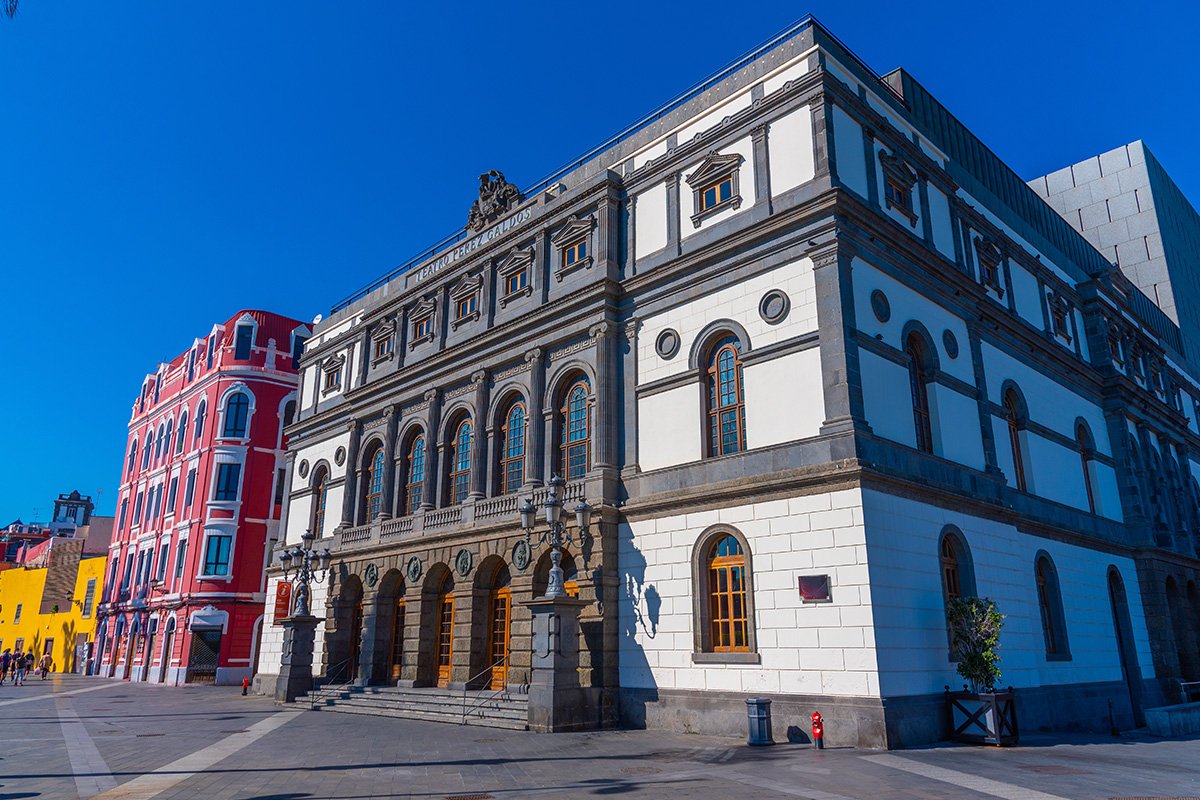
The building of the Teatro Pérez Galdós, located close to the sea, is one of the most emblematic buildings in the city. In addition to theater and opera performances, concerts – mainly jazz – are also held here.
Casa Museo Pérez Galdós
If you are wondering where the name of the theater mentioned above came from, here is the answer. Benito Pérez Galdós is one of the most outstanding Spanish writers of the 19th century. His former family home now houses a museum dedicated to him. Inside, you can see, among other things, books by this author, a study in which he worked, furniture and decorations.
Parque de Santa Catalina
The term “park” does not quite fit this place. It is more like a huge square planted with lush vegetation, flowers and palm trees. Whatever you call it, a visit to Parque Santa Catalina should be on every sightseeing route, if only because you can find plenty of atmospheric boutiques, restaurants and cafes nearby.
Other Attractions
If you still haven’t had your fill of sightseeing, there are a few other interesting places worth visiting in Las Palmas de Gran Canaria:
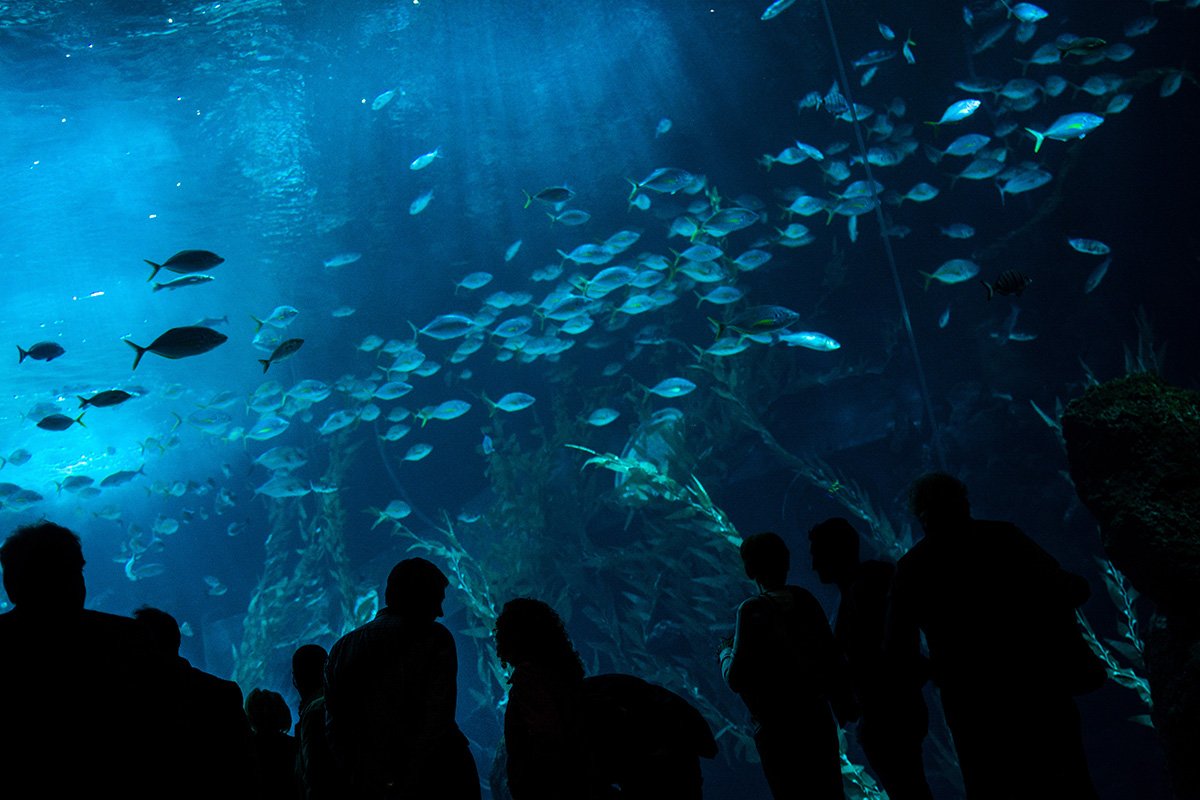
- Poema del Mar Aquarium: This is the Canary Islands’ home to over 350 species of fish and marine animals from all over the world. A walk through its water tanks is a great way to spend an afternoon, especially if you’re traveling with children.
- Museum of Science and Technology: This museum’s interactive exhibits explain complex scientific issues in an accessible way. It’s also a great place to go with children, who will have a lot of fun discovering the laws of physics and learning about robotics.
- Centro Atlántico de Arte Moderno (CAAM): Opened in 1989, CAAM is a place where mainly works by Spanish artists are presented. And the good news for art lovers is that admission to this contemporary art gallery is free!
- Parque de San Telmo
- Hermitage of San Antonio Abad
- Puerto de la Luz Harbour
- Alfredo Kraus Auditorium
Popular beaches in Las Palmas de Gran Canaria
- Playa de Las Canteras: Although you can find wonderful beaches all over the city, the largest and most touristy is Las Canteras beach. It stretches for about three kilometers, and within it, you will find everything you need for blissful laziness: hotels, restaurants, cafes, terraces, and a number of service premises dedicated to beachgoers.
- Playa de la Laja: A dark-sand beach perfect for surfing.
- Playa de las Alcaravaneras: The horizon visible in its vicinity is diversified by white sails, as it is located near the yacht marina.
- Playa del Confital
What to eat in Las Palmas?
What would a visit to a Spanish city be without tasting the local cuisine? Of course, apart from the ubiquitous tapas, which you simply cannot pass by indifferently, it is also worth trying a few other specialties offered by Las Palmas. Among the most interesting ones are:
- carne fiesta (another name: cochino de adobo): the basis of the dish is marinated pork cut into small pieces with the addition of wine, garlic, thyme, oregano and other herbs;
- puchero canario: a composition of several types of meat (pork, beef, poultry) with the addition of corn, chickpeas, pumpkin, potatoes and many other vegetables accompanied by aromatic spices;
- vieja con papas arrugadas: the titular vieja is a species of fish native to the Canary Islands, which is served in combination with potatoes baked in the oven and other vegetables;
- sancocho canario: a dish of fish, potatoes in their skins and the mojo picón salsa characteristic of the Canary Islands, made on the basis of paprika.
Other attractions of the island
If you get tired of the hustle and bustle of the island’s capital, which is crowded with tourists, think about a short trip outside the city agglomeration. Although you can’t count on trains here, a well-developed bus network will allow you to easily move from Las Palmas de Gran Canaria to all other parts of the island. Another option is to rent a car (you can use, for example, the RentalCars platform), which will allow you even faster and more convenient communication.
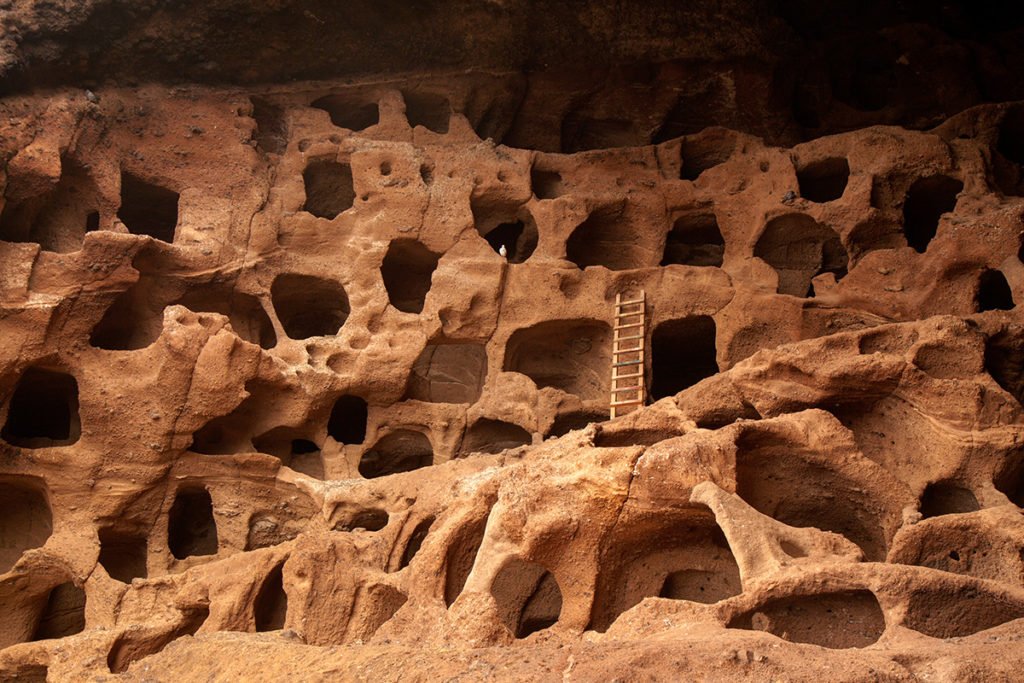
- Jardín Botánico Canario Viera y Clavijo: it is the largest botanical garden in the Canary Islands and in all of Spain. It is only 7 km away from the capital of Gran Canaria, and admission to it is completely free.
- Caldera de Bandama: a visit to this place is considered by many people to be one of the best natural attractions near Las Palmas de Gran Canaria. From the top of this extinct volcano, you will see the panorama of the city and its surroundings stretching around.
- El Faro de Maspalomas: a historic lighthouse in Maspalomas that remembers the times when Gran Canaria was a wild, sparsely populated island.
- Cenobio de Valerón: one of the most spectacular archaeological discoveries, Cenobio de Valerón, is a huge granary built by the indigenous people of the island. A trip to this place is a great idea for hot summer days, because the whole attraction is hidden in the grotto of a huge cave.

